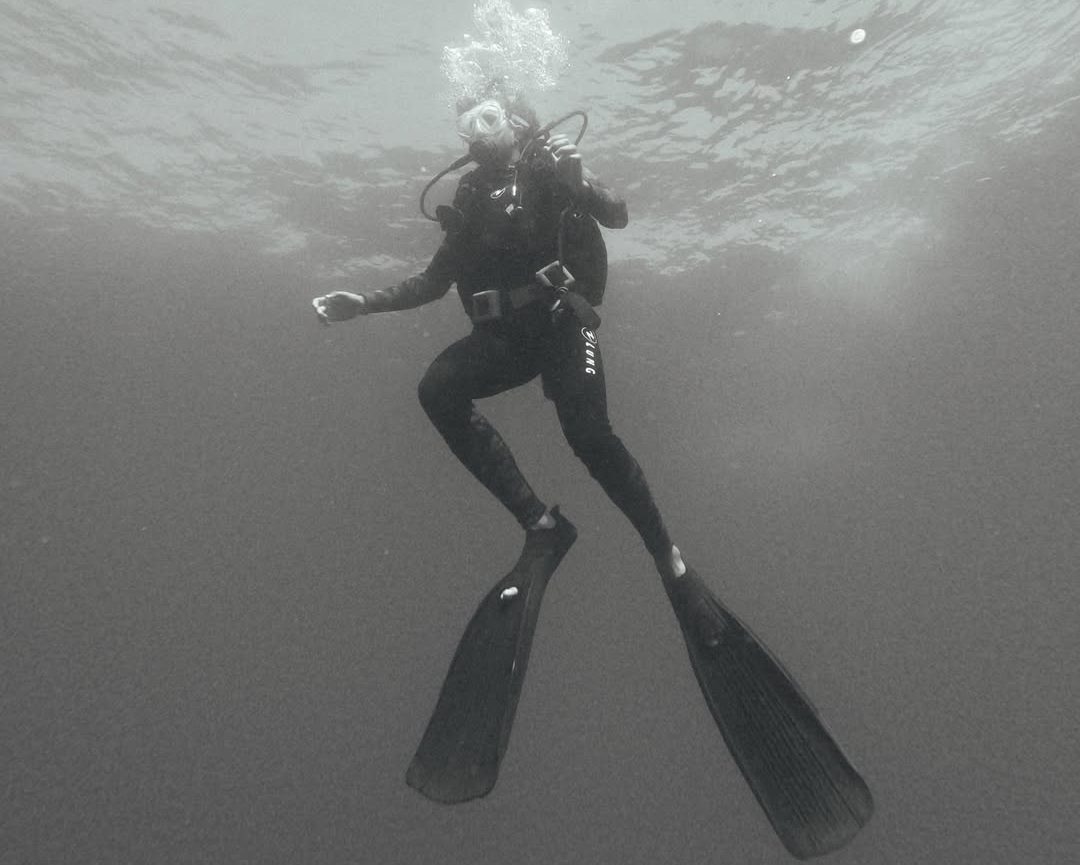We’re surrounded by it day in and day out, but how many of us have actually explored the deep blue sea?
Since Jacques Cousteau developed the Self-Contained Underwater Breathing Apparatus (SCUBA) in 1943, diving enthusiasts have uncovered a magical world beneath the surface. Lebanon’s waters are rich with historical wrecks, vibrant marine life, and geological wonders. From WWII submarines to stingray reefs, here’s what you need to know before plunging into Lebanon’s coastal depths.
Training
Scuba diving requires proper training and certification from a recognized organization. Fortunately, Lebanon is considered an international diving destination and is home to several accredited diving centers, including SSI (Scuba Schools International), PADI (Professional Association of Diving Instructors), NAUI (National Association of Underwater Instructors), TDI (Technical Diving International), and IANTD (International Association of Nitrox & Technical Diving).
Certified instructors conduct courses that cover both theory and practical application in pools and open waters. If you’re a confident swimmer and comfortable underwater, you’re likely a good candidate. Divers must be in good physical health or obtain written clearance from their doctor. The minimum age for an international certificate is typically 12, though some centers offer adapted courses for younger enthusiasts.
One such program is the Open Water Scuba Diver course from the National Institute for Scuba Diving, an IANTD partner. It includes three theory sessions and seven dives, with a maximum depth of 18 meters. The package includes all scuba equipment for pool and sea sessions, a logbook, a course manual, an international license, and insurance coverage. With your certification in hand, Lebanon’s underwater realm becomes an open invitation.
Essential Equipment
If you’re ready to invest in your own diving gear, comfort and fit should be your top priorities. Here’s what you’ll need:
- Wetsuit: Keeps you warm, especially in cooler waters. Can be paired with a weight system.
- Mask: Ensures clear vision—make sure it fits snugly.
- Fins: Help you move efficiently underwater.
- BCD (Buoyancy Control Device): Regulates your buoyancy and keeps you afloat.
- Cylinder: The tank that stores your breathable air.
- Regulator: Allows you to breathe from your tank.
- SPG (Submersible Pressure Gauge): Tracks remaining air.
- Depth Gauge: Shows how deep you are.
- Compass: Useful for underwater navigation.
Top Dive Sites in Lebanon
AUB Canyon
- Location: Opposite AUB Beach
- Depth: 5m to over 300m
- Level: Beginner to advanced
- Marine Life: Moray eels, groupers, octopus, lobsters (April)
- Visibility: 6–20m
- Highlights: Steep reef walls, old anchor at 43m, excellent night diving.
Shark Point
- Location: 1.5km SW of Raouche
- Depth: 28–50m
- Level: Experienced to advanced
- Marine Life: Tooth Sand Tiger sharks, Gray Nurse sharks (July–October), moray eels, stingrays
- Visibility: 10–25m
- Highlights: Five reefs, statue of a Lebanese saint, vertical reef walls.
The “Souffleur”
- Location: 12km south of Ras Beirut
- Depth: 34–38m
- Level: Experienced to advanced
- Marine Life: Stingrays, moray eels, eagle rays
- Visibility: 6–25m
- Highlights: WWII French submarine wreck, partially intact.
The “Macedonia”
- Location: 500m NW of Raouche
- Depth: 12–17m
- Level: Beginner to advanced
- Marine Life: Groupers, moray eels, octopus, lobsters (spring)
- Visibility: 8–20m
- Highlights: Split wreck, vibrant fish life.
The Tunnels
- Location: 100m west of “Macedonia” wreck
- Depth: 15–20m
- Level: Beginner to advanced
- Marine Life: Turtles, moray eels, octopus, groupers
- Visibility: 6–20m
- Highlights: Natural rock tunnel 100m long.
Stingray Reef
- Location: 500m NW of Beirut Military Beach
- Depth: 22–31m
- Level: Experienced to advanced
- Marine Life: Electric rays, thornback rays, eagle rays
- Visibility: 5–20m
- Highlights: Sandy patches, rich diversity of rays (June–July).
The “Alice B”
- Location: 1km NW of ATCL Jounieh
- Depth: 34–38m
- Level: Advanced
- Marine Life: Tuna, groupers, lobster
- Visibility: 4–25m
- Highlights: Intact wreck, great for underwater photography.
Torpedo Carrier Boat
- Location: Tripoli, 4km from the Fishing Port
- Depth: 60–62m
- Level: Experienced to advanced
- Marine Life: Diverse
- Visibility: 15–30m
- Highlights: Mysterious WWII wreck with 10 visible torpedoes.
HMS Victoria
- Location: 16km NW of Tripoli
- Depth: 75–146m
- Level: Technical
- Marine Life: Diverse
- Visibility: 15–30m
- Highlights: Historic Royal Navy flagship, vertically upright wreck.
Sunshield Oil Tanker
- Location: Maameltein, NW of Jounieh
- Depth: 19–32m
- Level: Experienced open water and above
- Marine Life: Rays, groupers, lobsters, turtles, sponges
- Visibility: Best from September to January
- Highlights: Sunk during the war, entire crew perished, caused an oil spill. The tanker now rests upside down. Dive trips are organized by Stingray Diver Center, led by instructor Sabine Boghossian.
The Natural Bridge (Pond Naturel)
- Location: Tabarja
- Depth: Up to 40m
- Level: Intermediate to advanced
- Marine Life: Stingrays
- Visibility: Blue waters, excellent during summer
- Highlights: Underwater arches and rock formations.
Lebanon’s coastline holds secrets that few have had the chance to uncover. Whether you’re after a new adventure or a deeper connection with the sea, scuba diving in Lebanon offers a breathtaking window into a world teeming with history, wonder, and life.
For diving excursions or diving classes you can get in touch with Stingray Divers in Beirut (+961 3 035 490) or
Dive the Med in Batroun (+961 3 119 002)
If you enjoyed reading this check out our article on River Sports in Lebanon.


